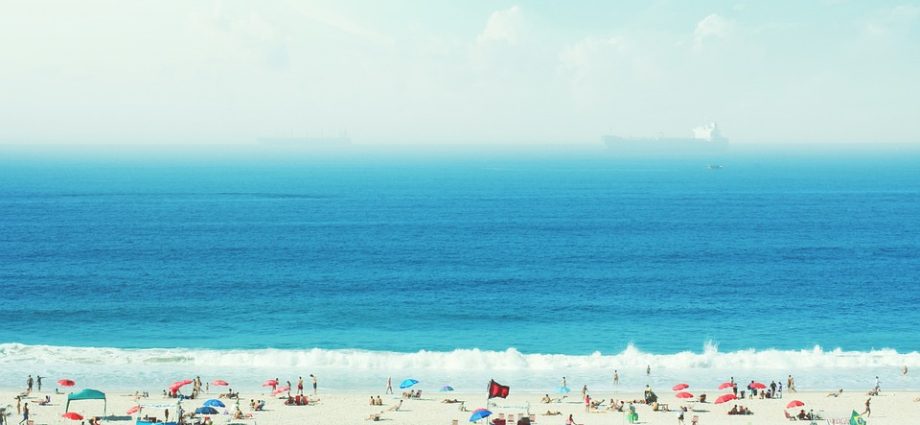Exploring Brazil’s Rich Cultural Heritage
Brazil, the world’s fifth largest country, boasts not only stunning natural beauty but also a rich cultural heritage that is a significant attraction for tourists. Brazil’s culture is a combination of indigenous, Portuguese, African, and immigrant influences, which have given rise to a rich cultural landscape of music, dance, art, and cuisine. In this article, we will take a closer look at Brazil’s rich cultural heritage and explore the top 10 tourist attractions that will give you an insight into this colorful world.
1. Rio de Janeiro
No article on Brazil’s cultural heritage would be complete without mentioning Rio de Janeiro, Brazil’s second-largest city and the birthplace of the samba. The annual Carnival, which takes place in February, is a spectacular display of samba music and dance. Rio is also home to several museums, including the National Museum of Fine Arts, the Museum of Modern Art, the Museum of the Republic, and the National Historical Museum, which house Brazil’s rich cultural history.
2. Salvador
Salvador, the capital of the northeastern state of Bahia, is often referred to as the cultural capital of Brazil. With a history that dates back over 500 years, Salvador has a unique blend of African and Portuguese culture. The city’s colonial architecture, cobbled streets, and colorful buildings are testament to its rich past. The city is famous for its music and dance, especially capoeira, a martial art that combines dance, music, and acrobatics.
3. Brasília
Brasília, Brazil’s capital city, was designed and built in the 1950s and is a masterpiece of modern architecture. The city is home to several iconic buildings designed by renowned architect Oscar Niemeyer, including the National Congress, the Cathedral of Brasília, and the National Museum. Visiting Brasília is a must for architecture enthusiasts.
4. Ouro Preto
Ouro Preto, located in the state of Minas Gerais, was once the center of Brazil’s gold rush. The city’s colonial architecture is well preserved, and visitors can admire the baroque buildings and churches that are scattered around the city. Ouro Preto is also home to several museums, including the Museum of Mineralogy and the Museum of the Inconfidência.
5. Recife
Located in the northeastern state of Pernambuco, Recife is known for its vibrant music scene and lively nightlife. The city’s colonial architecture, museums, and churches are also worth visiting. The Frevo Museum is dedicated to the Frevo, a lively dance that originated in Recife, while the Museum of Northeastern Man is dedicated to the history and culture of the region.
6. Curitiba
Curitiba, located in the southern state of Paraná, is often cited as one of the world’s most livable cities. The city is known for its innovative urban planning, green spaces, and transportation system. Curitiba also has several museums, including the Oscar Niemeyer Museum, which houses contemporary art, and the Museum of Automobiles, which has a collection of vintage cars.
7. Amazon Rainforest
The Amazon Rainforest covers most of northern Brazil and is home to several indigenous communities. A visit to the rainforest will give you a chance to learn about the traditional way of life of Amazonian tribes, as well as explore the biodiversity of the region. The Amazon is also home to several eco-lodges that offer visitors a chance to stay in the heart of the rainforest.
8. São Paulo
São Paulo, Brazil’s largest city, is a melting pot of cultures and a hub of creativity. The city is known for its street art, music, and theater scenes. São Paulo is also home to several museums, including the São Paulo Museum of Art, which has a vast collection of Brazilian and European art.
9. Fortaleza
Fortaleza, located in the northeastern state of Ceará, is famous for its beaches and seafood. The city’s colonial architecture, museums, and churches are also worth visiting. The Fortaleza Cathedral, built in the 18th century, is a beautiful example of colonial architectural style.
10. Minas Gerais
Minas Gerais is a state located in southeastern Brazil and is known for its colonial architecture, museums, and cuisine. The city of Belo Horizonte is home to several museums, including the Museum of Arts and Crafts and the Mineiro Museum, which showcase the culture and history of the region. Minas Gerais is also known for its traditional cuisine, which includes dishes such as Feijão Tropeiro and Pão de Queijo.
FAQs
Q. What is the best time to visit Brazil?
A. The best time to visit Brazil is between March and May or September and November when the weather is mild, and the crowds are smaller. The peak season is between December and February when the weather is hot and humid.
Q. Is it safe to travel to Brazil?
A. Brazil has a reputation for being a dangerous country, but most tourists have a trouble-free experience. It is important to take precautions, such as not wearing expensive jewelry or carrying large sums of money. Visitors should also avoid certain areas known for criminal activity.
Q. What should I pack for my trip to Brazil?
A. Brazil has a tropical climate, so lightweight clothing is a must. Sunscreen, insect repellent, and a hat are essential. Visitors should also pack comfortable shoes for walking around the cities and forests.
Q. What is the currency used in Brazil?
A. The currency used in Brazil is the Brazilian Real (BRL).
Q. What languages are spoken in Brazil?
A. The official language of Brazil is Portuguese. Many Brazilians also speak English, Spanish, and other languages.
Conclusion
Brazil’s cultural heritage is a vibrant mix of indigenous, Portuguese, African, and immigrant influences that have given rise to a rich and colorful landscape. From the buzzing energy of Rio de Janeiro’s Carnival to the historical beauty of Ouro Preto and the modern architecture of Brasília, there is something for everyone in Brazil. A visit to Brazil’s cultural attractions is an unforgettable experience that will leave visitors with a renewed appreciation for its unique heritage.
